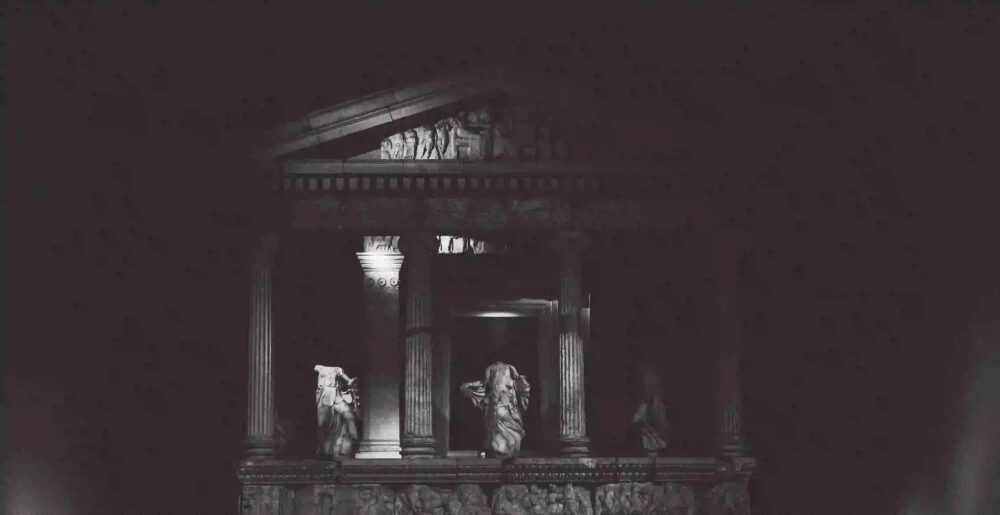The Mesopotamian civilization, one of the oldest in the world, was home to a rich and diverse pantheon of deities. In the heart of this ancient civilization, the city of Babylon flourished, and with it, the worship of numerous gods and goddesses. Let’s delve into the fascinating world of the Mesopotamian pantheon, specifically focusing on the gods and goddesses revered in Ancient Babylon.
An Overview of Mesopotamian Beliefs
The Mesopotamian pantheon was a complex and multifaceted system of divine beings, each with unique attributes and significance. The people of this ancient civilization believed that the gods and goddesses had control over various aspects of life, from fertility and agriculture to war and the natural elements.
Marduk: The Chief Deity
At the heart of the Babylonian pantheon, Marduk reigned as the chief deity. He was associated with water, vegetation, judgment, and magic. Marduk’s rise to prominence was intricately linked to the rise of Babylon as a major power in the region. As the city’s patron deity, Marduk was celebrated in various religious festivals and ceremonies.
Ishtar: The Goddess of Love and War
Ishtar, the goddess of love, fertility, and war, held a prominent place in Babylonian mythology. She was revered as a powerful and passionate deity, embodying both the nurturing aspects of femininity and the ferocity of battle. Ishtar was often depicted with lions, symbolizing her strength and courage.
Ea: The God of Wisdom and Magic
Ea, also known as Enki, was revered as the god of wisdom, magic, and fresh water. He was believed to possess great knowledge and was often called upon by the people for guidance and protection. Ea played a crucial role in the creation of humanity and was associated with the arts, crafts, and intellectual pursuits.
Nergal: The God of War and Plague
Nergal, the fierce god of war and plague, was both feared and respected in Babylonian mythology. He was often depicted as a lion-headed deity, symbolizing his association with war and destruction. Despite his fearsome nature, Nergal was also considered a protector against malevolent forces.
Tiamat: The Primordial Goddess of Chaos
Tiamat, the primordial goddess of the salt sea, represented chaos and creation in Mesopotamian mythology. She was revered as the mother of all gods and was associated with the forces of nature. Tiamat’s epic battle with Marduk, as recounted in the Enuma Elish, is a central myth in Babylonian cosmology.
Worship and Rituals
The people of Ancient Babylon engaged in elaborate rituals and ceremonies to honor and appease the gods and goddesses. Temples dedicated to the deities served as centers of religious activity, where priests and priestesses conducted sacred rites and offerings.
Divination and Prophecy
The Babylonians placed great importance on divination and sought to interpret signs and omens as messages from the divine realm. Priests specialized in various forms of divination, such as the interpretation of celestial phenomena, the inspection of animal entrails, and the casting of lots.
Festivals and Celebrations
Throughout the year, the Babylonians celebrated a multitude of festivals dedicated to different deities. These festivities included processions, feasting, music, and dance, all aimed at honoring and invoking the blessings of the gods and goddesses.
Legacy and Influence
The mythology and religious practices of the Mesopotamian pantheon have left a lasting impact on subsequent civilizations. The stories of the gods and goddesses, as well as the concepts of divine judgment and afterlife, have echoed through the annals of history and influenced the development of religious thought in the ancient Near East.
The pantheon’s intricate cosmology and rich narratives continue to captivate scholars and enthusiasts, shedding light on the beliefs and aspirations of the people who inhabited the cradle of civilization.
In conclusion, the Mesopotamian pantheon, with its array of gods and goddesses, offers a captivating glimpse into the spiritual and cultural tapestry of Ancient Babylon. This intricate web of divine beings, rituals, and myths provides a window into the worldview and aspirations of one of the world’s earliest civilizations.
As we explore the ancient myths and legends of Mesopotamia, we gain a deeper understanding of humanity’s enduring quest for meaning, connection, and transcendence in the cosmos.
